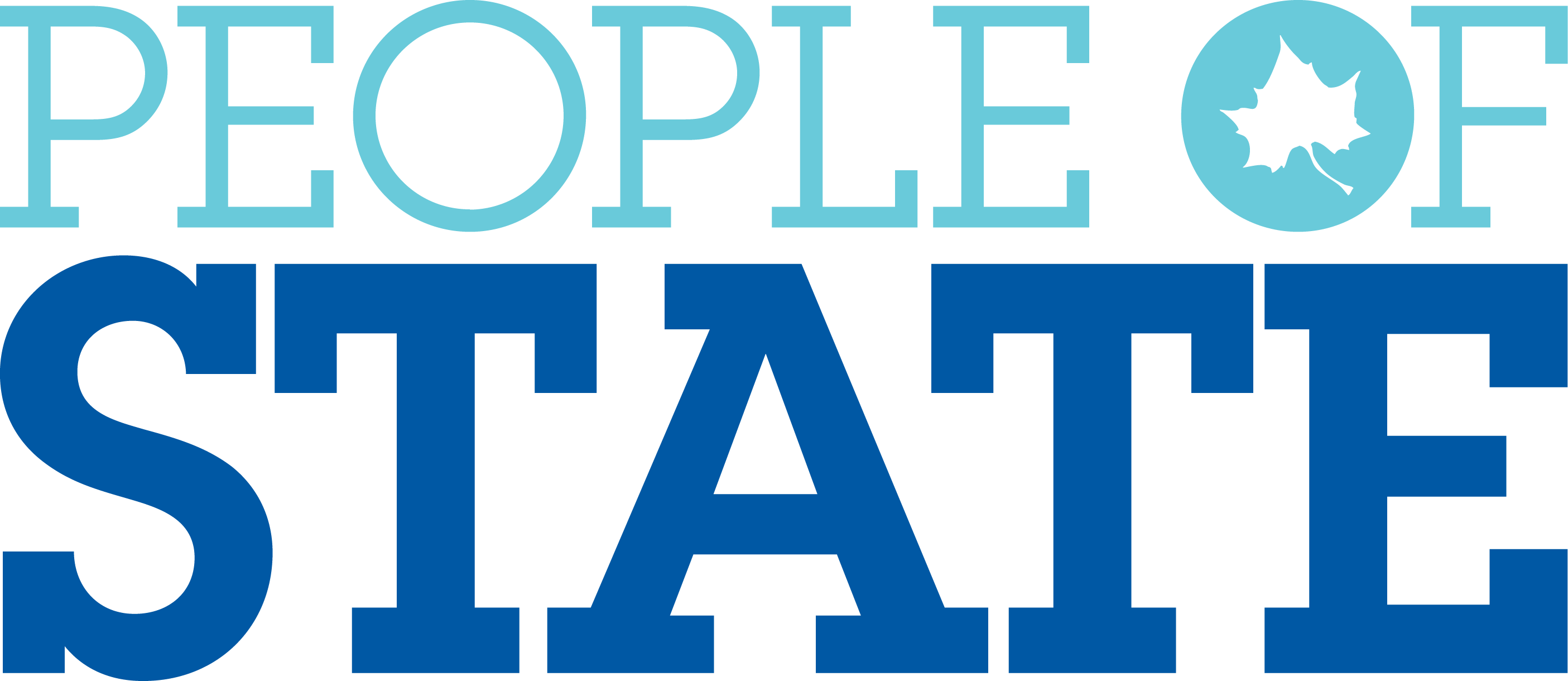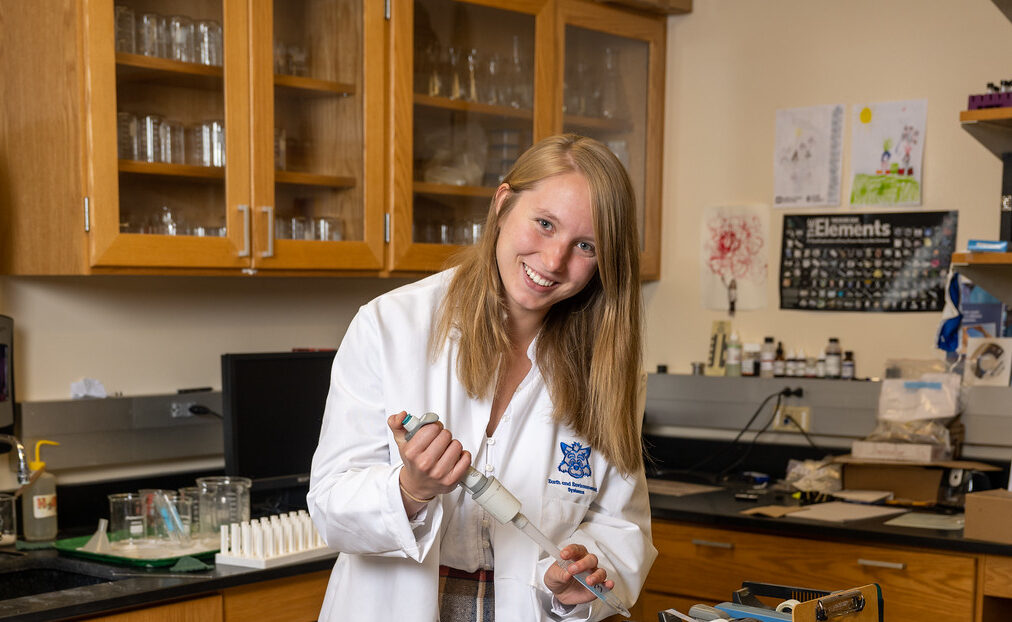
Elynor Head
By Kasy Long
Mar 30, 2023
Elynor Head knows about rice. But she doesn’t focus on whether to serve white or brown rice with her salmon and chicken dishes. Instead, she is an active undergraduate researcher learning about a wild rice species, Zizania Palustris, in Lac Vieux Desert, Michigan.
Head’s passions include saving wild rice from extinction, protecting the freshwater lakes of northern Michigan, and preserving an important part of the Ojibwa Native American tribe culture that resides in the region. She has explored these interests by participating in research projects during her time at Indiana State, as well as partnering with the United States Army Corp of Engineers.
The senior geology student, from Mooresville, Indiana, has always valued academic inquiry and accelerated learning programs. That’s why she joined Indiana State’s Honors College, an immersive academic unit offering unique learning experiences in a collaborative environment for students. With smaller class sizes, individualized and group research projects, and powerful experiential learning opportunities, the Honors College is an integral part of Indiana State’s world-class academic foundation.
“The Honors College has allowed me to participate in impactful research inside and outside of my major. If there’s an opportunity I want to pursue, the professors are there to encourage me every step of the way,” Head shares.
Learn more about the Honors College at Indiana State.
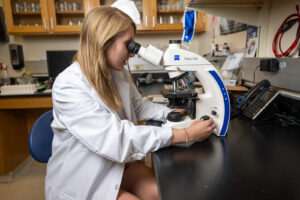
There have been numerous research opportunities for Head in her Department of Earth and Environmental Systems geology courses. Indiana State’s geology students take a foundation of classes spanning numerous subject areas outside geology, including mathematics, chemistry, and physics, in order to better understand the earth, its oceans, and how people impact the environment.
Students benefit from one-on-one guidance from their professors, who specialize in environmental geosciences, water resources, geochemistry, geoarchaeology, and physical geology. The geology program prepares students through coursework and hands-on projects in laboratories, field camps, and other research projects.
“Our professors have experience outside of teaching, which helps us know what we can do with our degrees. They’re ambitious and they let us follow through with opportunities and research ideas,” says Head, who credits geology professor Jeffrey Stone, PhD, for mentoring her on geology projects.
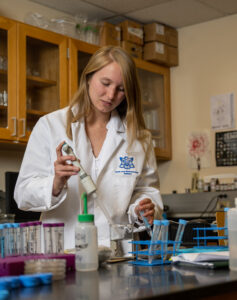
Projects include research conducted inside Indiana State’s Paleolimnology Research Lab, a research laboratory using physical, chemical, and biological information to study lake sediments and environmental changes. During her undergraduate education, Head worked as a student researcher in the laboratory space where she studied diatoms [a microfossil preserved over time by its silica exoskeleton that is used as an environmental indicator in lake or ocean systems].
When diatoms die, they are preserved by the silica exoskeletons they leave behind. Researchers use these microfossils to understand how environmental conditions change over time. Head’s research focused on how these environmental changes have affected the wild rice population.
The Sycamore has presented her research at undergraduate research conferences across the Midwest and at other national conferences, including the Geological Society of America. Head spoke to state senators, sharing applications of her research for future environmental and climate research. Her research has also been shared in a TEDx Talk presentation.
“I chose Indiana State because it offered the best research opportunities for undergraduates, the best scholarship support to students, and a hands-on approach to my coursework that would prepare me best as a professional geologist,” Head comments.
Her education has opened doors to internship opportunities, including an internship at CountryMark, an agricultural firm in Indianapolis that operates in the crude oil and refinery businesses in the United States. Head explored energy resources in the Illinois Basin for the firm, and she worked with experienced geologists and petroleum engineers at drill sites in Illinois, Indiana, and Kentucky. Her internship allowed her to gain industry experience and led to her analyzing production data and designing geological maps for the firm.
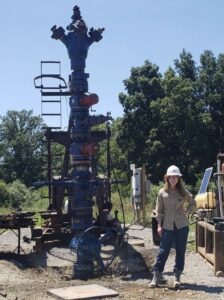
“Geology is like a treasure hunt. You locate new sources and piece together a story of how the environment changes over time. You see what occurred in the past and how it affects the present,” says Head.
The Sycamore will continue pursuing her interest in oil exploration while working at the Kansas Geological Survey as a graduate research assistant studying Mississippian-age carbonates (the Mississippian is an era of geologic time) to characterize the Kansas oil basin. She will also pursue her master’s degree in geological sciences at the University of Kansas.
Head said her education at Indiana State was enhanced through participation in on-campus student organizations, including serving as a student director of the John C. Hook Observatory and as president of the Earth Science Club.
“Indiana State offers a strong course load that has helped me prepare for research in my future career. I know if there’s an opportunity I want to pursue, I can make it happen,” she says.
Indiana State students enjoy numerous opportunities to conduct research inside and outside the classroom. For geology students like Head, Indiana State provides resources for them to learn more about the earth, and to dig deep below the surface to uncover new scientific truths. Because real geologists wear BLUE!
